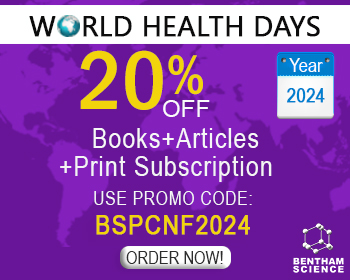Abstract
Selenium is a trace element, nutritionally classified as an essential micronutrient, involved in maintaining the correct function of several enzymes incorporating the selenocysteine residue, namely the selenoproteins. The human selenoproteome including 25 proteins is extensively described here. The most relevant selenoproteins, including glutathione peroxidases, thioredoxin reductases and iodothyronine deiodinases are required for the proper cellular redox homeostasis as well as for the correct thyroid function, thus preventing oxidative stress and related diseases. This review summarizes the main advances on oxidative stress with a focus on selenium metabolism and transport. Moreover, thyroid-related disorders are discussed, considering that the thyroid gland contains the highest selenium amount per gram of tissue, also for future possible therapeutic implication.
Keywords: Deiodinases, oxidative stress, redox homeostasis, selenium, selenoproteins, thyroid dysfunction.
[http://dx.doi.org/10.1016/S0140-6736(11)61452-9] [PMID: 22381456]
[http://dx.doi.org/10.1002/iub.1466] [PMID: 26714931]
[http://dx.doi.org/10.1016/j.bbagen.2009.02.014] [PMID: 19268692]
[http://dx.doi.org/10.1016/j.abb.2015.06.024] [PMID: 27095226]
[http://dx.doi.org/10.1016/j.abb.2016.08.003] [PMID: 27495740]
[http://dx.doi.org/10.1089/ars.2011.4145] [PMID: 21955027]
[http://dx.doi.org/10.1155/2017/1297658] [PMID: 28255299]
[http://dx.doi.org/10.1038/nrendo.2011.174] [PMID: 22009156]
[http://dx.doi.org/10.1016/j.tibs.2013.12.007] [PMID: 24485058]
[http://dx.doi.org/10.1074/jbc.M116.756155] [PMID: 27645994]
[http://dx.doi.org/10.1007/s00018-009-0032-4] [PMID: 19399585]
[http://dx.doi.org/10.1155/2016/6757154] [PMID: 27051079]
[http://dx.doi.org/10.1016/j.ccc.2005.10.001] [PMID: 16399020]]
[http://dx.doi.org/10.1016/j.bbamcr.2016.09.012] [PMID: 27646922]
[http://dx.doi.org/10.1146/annurev-biochem-061516-045037] [PMID: 28441057]
[http://dx.doi.org/10.1038/nri3423] [PMID: 23618831]
[http://dx.doi.org/10.1016/j.ejmech.2015.04.040] [PMID: 25942353]
[http://dx.doi.org/10.1083/jcb.201102095] [PMID: 21746850]
[http://dx.doi.org/10.1089/ars.2006.8.1865] [PMID: 16987039]
[http://dx.doi.org/10.1016/j.abb.2015.10.022] [PMID: 27095208]
[http://dx.doi.org/10.1016/B978-012373947-6.00285-3]
[http://dx.doi.org/10.1016/j.freeradbiomed.2009.05.032] [PMID: 19500666]
[http://dx.doi.org/10.1016/j.abb.2015.11.017] [PMID: 27095209]
[http://dx.doi.org/10.1155/2013/956792] [PMID: 23738047]
[http://dx.doi.org/10.1016/j.redox.2017.02.015] [PMID: 28285189]
[http://dx.doi.org/10.15698/mic2014.05.145] [PMID: 28357236]
[http://dx.doi.org/10.1007/s10522-004-7386-7] [PMID: 15834665]
[http://dx.doi.org/10.1016/j.redox.2016.12.035] [PMID: 28110218]
[http://dx.doi.org/10.1242/jeb.132142] [PMID: 28356365]
[http://dx.doi.org/10.1016/j.cmet.2011.03.010] [PMID: 21459321]
[http://dx.doi.org/10.3390/ijms18071481] [PMID: 28698529]
[http://dx.doi.org/10.1146/annurev.pa.23.040183.001323] [PMID: 6307121]
[http://dx.doi.org/10.1016/j.molcel.2007.03.016] [PMID: 17434122]
[http://dx.doi.org/10.1089/ars.2015.6247] [PMID: 25891126]
[http://dx.doi.org/10.1021/bi9020378] [PMID: 20050630]
[http://dx.doi.org/10.1016/j.bbrc.2016.01.153] [PMID: 26837049]
[http://dx.doi.org/10.1074/jbc.R113.544635] [PMID: 24515117]
[http://dx.doi.org/10.1074/jbc.M603761200] [PMID: 17105724]
[http://dx.doi.org/10.1016/j.redox.2017.04.039] [PMID: 28528123]
[http://dx.doi.org/10.1016/j.redox.2014.02.006] [PMID: 24634836]
[http://dx.doi.org/10.1016/B978-0-12-405881-1.00001-X] [PMID: 23849856]
[http://dx.doi.org/10.1016/j.freeradbiomed.2014.08.017] [PMID: 25277419]
[http://dx.doi.org/10.1016/j.freeradbiomed.2016.04.199] [PMID: 27151506]
[http://dx.doi.org/10.1155/2016/8629024] [PMID: 27006749]
[http://dx.doi.org/10.1054/plef.2001.0332] [PMID: 12051956]
[http://dx.doi.org/10.1021/acs.chemrev.5b00407] [PMID: 26875845]
[http://dx.doi.org/10.1089/ars.2012.4729] [PMID: 23244576]
[http://dx.doi.org/10.1016/j.freeradbiomed.2016.04.001] [PMID: 27085844]
[http://dx.doi.org/10.1016/j.freeradbiomed.2015.03.022] [PMID: 25843657]
[http://dx.doi.org/10.1093/acprof:oso/9780198717478.003.0005]
[http://dx.doi.org/10.1016/0891-5849(95)91457-3] [PMID: 7896166]
[http://dx.doi.org/10.1042/BST0351147] [PMID: 17956298]
[http://dx.doi.org/10.3389/fphar.2014.00168] [PMID: 25100998]
[http://dx.doi.org/10.1111/j.1753-4887.2006.tb00198.x] [PMID: 16572602]
[http://dx.doi.org/10.1146/annurev-nutr-071714-034250] [PMID: 25974694]
[PMID: 26103741]
[http://dx.doi.org/10.1016/j.tox.2006.07.017] [PMID: 16935405]
[http://dx.doi.org/10.3945/ajcn.2010.29642] [PMID: 20573787]
[http://dx.doi.org/10.1016/j.jtemb.2014.07.003] [PMID: 25175508]
[http://dx.doi.org/10.1016/j.tox.2010.06.004] [PMID: 20561558]
[http://dx.doi.org/10.1089/thy.2007.0040] [PMID: 17696828]
[http://dx.doi.org/10.1016/j.nbd.2014.06.022] [PMID: 25014023]
[http://dx.doi.org/10.1001/jama.2008.864] [PMID: 19066370]
[http://dx.doi.org/10.1074/jbc.M113.526863] [PMID: 24425862]
[http://dx.doi.org/10.5603/EP.2016.0064] [PMID: 28042649]
[http://dx.doi.org/10.1016/j.biochi.2006.04.015] [PMID: 16737768]
[http://dx.doi.org/10.1126/science.1083516] [PMID: 12775843]
[http://dx.doi.org/10.1016/j.jtemb.2005.09.003] [PMID: 16325529]
[http://dx.doi.org/10.1126/science.1133114] [PMID: 17234949]
[http://dx.doi.org/10.1096/fj.201600424] [PMID: 27473727]
[http://dx.doi.org/10.1074/jbc.M112.421404] [PMID: 23038251]
[http://dx.doi.org/10.1074/jbc.M709945200] [PMID: 18174160]
[http://dx.doi.org/10.1186/1475-2891-10-75] [PMID: 21767397]
[http://dx.doi.org/10.1042/bj20021853] [PMID: 12521380]
[http://dx.doi.org/10.1016/j.bbagen.2009.03.026] [PMID: 19345254]
[http://dx.doi.org/10.1007/s00018-016-2339-2] [PMID: 27563706]
[http://dx.doi.org/10.1371/journal.pone.0140353] [PMID: 26452064]
[http://dx.doi.org/10.1093/jn/134.1.157] [PMID: 14704310]
[http://dx.doi.org/10.1016/j.orcp.2016.07.004] [PMID: 27524654]
[http://dx.doi.org/10.1002/jgm.2945] [PMID: 28190280]
[http://dx.doi.org/10.1080/10715760320001634852] [PMID: 15104205]
[PMID: 9792455]
[http://dx.doi.org/10.1074/jbc.274.5.2866] [PMID: 9915822]
[http://dx.doi.org/10.1093/hmg/ddg115] [PMID: 12700173]
[http://dx.doi.org/10.1073/pnas.0806015105] [PMID: 18713863]
[http://dx.doi.org/10.1002/ana.21644] [PMID: 19557870]
[http://dx.doi.org/10.1016/j.febslet.2006.08.065] [PMID: 16962588]
[http://dx.doi.org/10.1007/s12011-017-0979-1] [PMID: 28281222]
[http://dx.doi.org/10.1074/jbc.M707951200] [PMID: 18032379]
[http://dx.doi.org/10.1074/jbc.M511386200] [PMID: 16319061]
[http://dx.doi.org/10.1074/jbc.M113.471235] [PMID: 23880772]
[http://dx.doi.org/10.1074/jbc.M702267200] [PMID: 17526492]
[http://dx.doi.org/10.1073/pnas.1600204113] [PMID: 27588899]
[http://dx.doi.org/10.1089/ars.2015.6388] [PMID: 26168272]
[http://dx.doi.org/10.1042/BJ20070929] [PMID: 17922679]
[http://dx.doi.org/10.3390/ijms17020231] [PMID: 26875981]
[http://dx.doi.org/10.1038/nature02656] [PMID: 15215856]
[http://dx.doi.org/10.1371/journal.pone.0062102] [PMID: 23614019]
[http://dx.doi.org/10.1074/jbc.M115.680215] [PMID: 26504085]
[http://dx.doi.org/10.1016/j.bbagen.2010.01.005] [PMID: 20114070]
[http://dx.doi.org/10.1021/bi4001358] [PMID: 23566202]
[http://dx.doi.org/10.1042/BJ20140076] [PMID: 24897171]
[http://dx.doi.org/10.1139/O09-064] [PMID: 19935881]
[http://dx.doi.org/10.1096/fj.06-075820] [PMID: 18198219]
[http://dx.doi.org/10.1210/en.2013-1167] [PMID: 23913443]
[http://dx.doi.org/10.1089/ars.2010.3526] [PMID: 21194350]
[http://dx.doi.org/10.1021/bi602462q] [PMID: 17503775]
[http://dx.doi.org/10.1016/0162-0134(95)00045-3] [PMID: 8576706]
[http://dx.doi.org/10.1016/S0014-5793(02)02628-5] [PMID: 12062442]
[http://dx.doi.org/10.1016/S0162-0134(00)00219-1] [PMID: 11330475]
[http://dx.doi.org/10.1016/j.jinorgbio.2006.05.018] [PMID: 16876868]
[http://dx.doi.org/10.1007/PL00000666] [PMID: 11215511]
[http://dx.doi.org/10.1074/jbc.273.15.8910] [PMID: 9535873]
[http://dx.doi.org/10.1128/MCB.22.5.1402-1411.2002] [PMID: 11839807]
[http://dx.doi.org/10.1074/jbc.M004014200] [PMID: 10945981]
[http://dx.doi.org/10.1007/s12011-007-8003-9] [PMID: 17916946]
[http://dx.doi.org/10.1155/2012/486147] [PMID: 22654914]
[http://dx.doi.org/10.1074/jbc.M112.392225] [PMID: 22977247]
[http://dx.doi.org/10.1016/j.bbrc.2008.02.006] [PMID: 18267104]
[PMID: 9042207]
[PMID: 20392995]
[http://dx.doi.org/10.3945/ajcn.2009.27230F] [PMID: 19420095]
[http://dx.doi.org/10.1079/PNS2005467] [PMID: 16313696]
[http://dx.doi.org/10.1016/0014-5793(73)80755-0] [PMID: 4736708]
[http://dx.doi.org/10.1074/jbc.274.17.12061] [PMID: 10207030]
[http://dx.doi.org/10.1074/jbc.M512655200] [PMID: 16446369]
[http://dx.doi.org/10.1016/j.canlet.2007.10.019] [PMID: 18054426]
[http://dx.doi.org/10.1152/ajpgi.2001.281.3.G848] [PMID: 11518697]
[http://dx.doi.org/10.1158/0008-5472.CAN-03-2272] [PMID: 14871826]
[http://dx.doi.org/10.18632/oncotarget.2549] [PMID: 25333265]
[http://dx.doi.org/10.1002/mnfr.200700465] [PMID: 18686295]
[http://dx.doi.org/10.1080/02713683.2016.1196707] [PMID: 27420751]
[http://dx.doi.org/10.1074/jbc.M115.656363] [PMID: 25922076]
[http://dx.doi.org/10.1002/(SICI)1098-2795(199705)47:1<87:AID-MRD12>3.0.CO;2-X] [PMID: 9110319]
[http://dx.doi.org/10.1021/bi00107a003] [PMID: 1931961]
[http://dx.doi.org/10.1016/j.mce.2008.04.007] [PMID: 18508193]
[http://dx.doi.org/10.1172/JCI15990] [PMID: 12782676]
[http://dx.doi.org/10.1016/S0074-7696(04)34004-0] [PMID: 15066375]
[http://dx.doi.org/10.1677/joe.1.05971] [PMID: 15749805]
[http://dx.doi.org/10.1152/physrev.00030.2013] [PMID: 24692351]
[http://dx.doi.org/10.1210/er.2008-0019] [PMID: 18815314]
[http://dx.doi.org/10.1210/en.2003-0084] [PMID: 12746313]
[http://dx.doi.org/10.1016/j.mce.2015.01.011] [PMID: 25591907]
[http://dx.doi.org/10.1210/me.2007-0490] [PMID: 18356288]
[http://dx.doi.org/10.1210/en.2016-1103] [PMID: 27355490]
[http://dx.doi.org/10.1530/JME-15-0156] [PMID: 26390881]
[http://dx.doi.org/10.1016/j.biocel.2011.05.016] [PMID: 21679772]
[http://dx.doi.org/10.1172/JCI29812] [PMID: 17016550]
[http://dx.doi.org/10.1038/nature04330] [PMID: 16400329]
[http://dx.doi.org/10.1172/JCI44678] [PMID: 21540553]
[http://dx.doi.org/10.1186/cc5068] [PMID: 17040563]
[http://dx.doi.org/10.1172/JCI25083] [PMID: 16127464]
[http://dx.doi.org/10.1128/MCB.02284-05] [PMID: 16782878]
[http://dx.doi.org/10.1007/BF03347465] [PMID: 21427525]
[http://dx.doi.org/10.1530/JOE-15-0133] [PMID: 25972358]
[http://dx.doi.org/10.1210/jc.2005-0535] [PMID: 15886232]
[http://dx.doi.org/10.1111/j.1365-2265.2007.03102.x] [PMID: 17986277]
[http://dx.doi.org/10.1210/jc.2007-0510] [PMID: 17504898]
[http://dx.doi.org/10.1210/en.2013-2066] [PMID: 24731098]
[http://dx.doi.org/10.1210/jc.2008-2520] [PMID: 19293265]
[http://dx.doi.org/10.1165/rcmb.2011-0179OC] [PMID: 21685153]
[http://dx.doi.org/10.1210/en.2005-0608] [PMID: 16150911]
[http://dx.doi.org/10.1677/joe.1.07056] [PMID: 17170227]
[http://dx.doi.org/10.1210/en.2005-0963] [PMID: 16150898]
[http://dx.doi.org/10.1210/jc.2002-022013] [PMID: 12843166]
[http://dx.doi.org/10.1210/en.2007-0043] [PMID: 17628010]
[http://dx.doi.org/10.1186/1471-2164-10-388] [PMID: 19698090]
[http://dx.doi.org/10.1080/00039890109604483] [PMID: 11777029]
[http://dx.doi.org/10.1111/j.1523-1755.2005.00169.x] [PMID: 15698444]
[http://dx.doi.org/10.2215/CJN.00800208] [PMID: 18550654]
[http://dx.doi.org/10.1210/edrv-17-1-45] [PMID: 8641223]
[http://dx.doi.org/10.1111/j.1365-2796.2007.01865.x] [PMID: 17908160]
[http://dx.doi.org/10.1093/ndt/gfn682] [PMID: 19106286]
Tatar, E.; Sevinc Ok, E.; Ozkahya, M.; Toz, H.; Cirit, M.
Basci, A.; Ok, E. Nutritional state alters the association be-tween free triiodothyronine levels and mortality in hemo-dialysis patients. Am. J. Nephrol., 2011, 33(4), 305-312.
[http://dx.doi.org/10.1159/000324883] [PMID: 21389695]
[http://dx.doi.org/10.1016/j.jcma.2011.12.006] [PMID: 22340737]
[http://dx.doi.org/10.2215/CJN.05250511] [PMID: 22246282]
[PMID: 8534710]
[http://dx.doi.org/10.1093/ndt/gfh096] [PMID: 14993483]
[http://dx.doi.org/10.1681/ASN.2005040356] [PMID: 16033857]
[http://dx.doi.org/10.1055/s-2002-36427] [PMID: 12518252]
[http://dx.doi.org/10.1210/jcem-43-3-630] [PMID: 821962]
[PMID: 4125852]
[http://dx.doi.org/10.1056/NEJM197701062960101] [PMID: 830262]
[http://dx.doi.org/10.1056/NEJM200102153440707] [PMID: 11172193]
[http://dx.doi.org/10.1373/clinchem.2003.021022] [PMID: 14709659]
[http://dx.doi.org/10.1530/eje.0.1440339] [PMID: 11275942]
[http://dx.doi.org/10.1016/S0272-6386(01)80073-1] [PMID: 11136185]
[http://dx.doi.org/10.1016/0024-3205(82)90279-X] [PMID: 7040895]
[http://dx.doi.org/10.1016/S0272-6386(89)80055-1] [PMID: 2919601]
[http://dx.doi.org/10.1172/JCI110300] [PMID: 7276165]
[http://dx.doi.org/10.1016/j.ygcen.2008.12.008] [PMID: 19133263]
[http://dx.doi.org/10.1210/jc.2012-1663] [PMID: 22723335]
[http://dx.doi.org/10.1007/s10157-012-0727-y] [PMID: 23160649]
[http://dx.doi.org/10.1089/thy.2012.0475] [PMID: 23281965]
[http://dx.doi.org/10.1046/j.1365-2265.1997.1770988.x] [PMID: 9231052]
[http://dx.doi.org/10.1111/j.1523-1755.2004.00657.x] [PMID: 15149351]
[http://dx.doi.org/10.1210/jc.2011-2532] [PMID: 22205712]
[http://dx.doi.org/10.1016/j.metabol.2003.10.003] [PMID: 15015136]
[http://dx.doi.org/10.1111/j.1365-2265.2009.03609.x] [PMID: 19508590]
[http://dx.doi.org/10.1016/j.atherosclerosis.2009.11.013] [PMID: 20022324]
[http://dx.doi.org/10.1016/j.biopha.2006.10.008] [PMID: 17383146]
[http://dx.doi.org/10.1111/j.1525-139X.2009.00585.x] [PMID: 19708986]
[http://dx.doi.org/10.1093/ndt/gfl605] [PMID: 17082213]
[PMID: 24095912]
[http://dx.doi.org/10.1089/thy.2005.15.787] [PMID: 16131322]
[http://dx.doi.org/10.1210/jc.2014-2192] [PMID: 25148231]
[http://dx.doi.org/10.1016/j.redox.2015.09.002] [PMID: 26402162]
[http://dx.doi.org/10.1016/0891-5849(96)00233-X] [PMID: 8902530]
[http://dx.doi.org/10.18388/abp.2006_3294] [PMID: 17160142]
[http://dx.doi.org/10.1097/00000441-198701000-00003] [PMID: 3812549]
[PMID: 8084452]
[http://dx.doi.org/10.5812/numonthly.17945] [PMID: 25032143]
[http://dx.doi.org/10.1159/000189042] [PMID: 8773346]
[http://dx.doi.org/10.1016/S0946-672X(04)80031-2] [PMID: 15139391]
[http://dx.doi.org/10.1016/bs.acc.2014.11.006] [PMID: 25858871]
[http://dx.doi.org/10.1046/j.1523-1755.2003.00884.x] [PMID: 12631366]
[http://dx.doi.org/10.1093/ajcn/81.4.829] [PMID: 15817859]
[PMID: 8575984]
[http://dx.doi.org/10.1080/07315724.1998.10718754] [PMID: 9627910]
[PMID: 2636670]
[http://dx.doi.org/10.1385/BTER:97:1:15] [PMID: 14742897]
[http://dx.doi.org/10.1182/blood.V79.12.3233.bloodjournal79123233] [PMID: 1339300]
[http://dx.doi.org/10.1159/000045915] [PMID: 11244321]

























